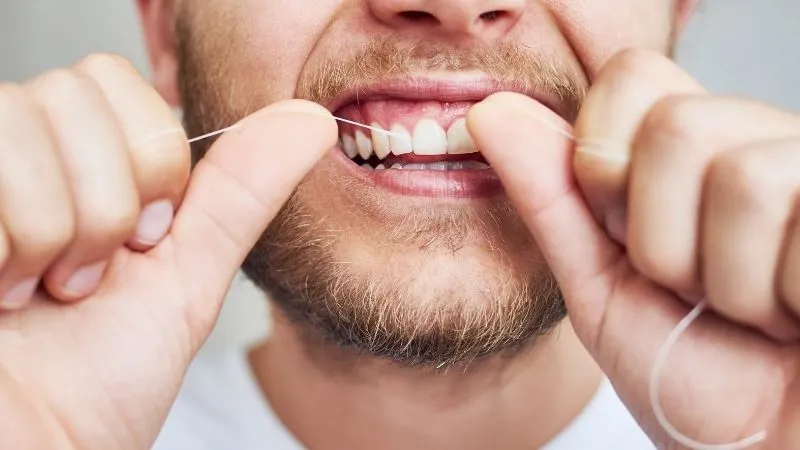Does flossing cause teeth gaps?
No. Flossing doesn't cause gaps between teeth. But can it make gaps more noticeable? Sometimes, yes.
Flossing removes plaque and food debris stuck between teeth. If gums are inflamed due to poor oral hygiene, they may bleed or shrink after flossing, making existing gaps more visible. That is not flossing's fault! Only a sign of gum disease. Healthy gums should hug the teeth snugly, and flossing helps maintain that.

Briefly? You had already gaps. After cleaning plaque with flossing, you clearly notice gaps. Flossing does not create new problems and new gaps.
Skipping floss? That is riskier. Plaque buildup leads to gum recession and real gaps over time. So floss daily, do it gently, and if you notice unusual changes, visit your dentist.
Common flossing mistakes
|
Common flossing mistakes |
Why it's a problem |
|
Sawing motion |
Damages gums and enamel |
|
Skipping gum line |
Plaque buildup |
|
Flossing too hard |
Irritates gums |
|
Flossing too gently |
Ineffective cleaning |
|
Reusing floss |
Spreads bacteria |
|
Not flossing daily |
Increases decay risk |
Flossing seems simple, right? But small mistakes make a big difference.
Doing back and forth like you're cutting wood? Wrong move. Thathurtsyour gums and wearsdown enamel. Floss should glide, not saw. Going too hard? That pushesplaque deeper instead of removing it. Too gentle? It won't clean properly.
What about skipping the gum line! Big mistake. Plaque loves to hide there, waiting to cause trouble. And reusing the same piece of floss? Think of it like using a dirty napkin over and over! Bacteria spread instead of getting cleaned.
Flossing should be smooth, gentle, and thorough. Do it right, and your gums will thank you.
Correct use of dental floss to prevent cavities in the teeth
Flossing isn't just about sliding a string between your teeth. Do it wrong, and you're wasting your time. Do it right, and you stop cavities before they start.
First, take about 40 cm of floss. Wrap most of it around your middle fingers, leaving a small section to work with. Why so much? Because using the same part for all your teeth spreads bacteria instead of removing it.
Hold the floss tightly between your thumbs and index fingers. Gently slide it between your teeth. Don't snap it down! Your gums aren't a punching bag. Move the floss in a C-shape around each tooth, hugging the sides. Go under the gumline, but don't force it. Imagine cleaning under a fingernail, gentle but thorough.
One tooth done? Roll the floss to a clean section and move to the next. Repeat until every tooth is clean, even the back ones. Ever skipped the back teeth? That's like only washing the front of your hands. Bacteria love hiding where you don't check.
Floss once a day, preferably before bed. That's when bacteria are most active, feasting on food left behind. Do it right, and your teeth stay strong for life.
Does flossing cause loose teeth?
No. You need flossing. But skipping flossing can lead to tooth loss over time. Not today, not tomorrow, but eventually.
Plaque builds up between teeth where your brush can't reach. Leave it there long enough, and bacteria start attacking your gums. First, they get inflamed. Then they start pulling away from your teeth. This is how gum disease begins. And advanced gum disease? That's the number one cause of tooth loss.
Does missing a few days matter? Absolutely. Think of it like a small crack in a wall. Ignore it, and soon the whole structure weakens. Flossing clears out the bacteria before they get the chance to do real damage.
So, floss daily. Not just for fresh breath, but to keep your teeth where they belong: in your mouth, not in a dentist's tray!
For questions and appointments, you can contact Lisa Smile Studio.

